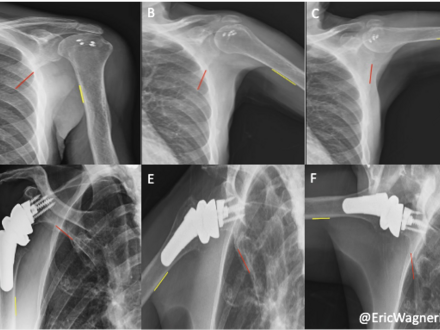Emory Healthcare Researchers Use Dynamic Digital Radiography to Compare Shoulder Improvement of Two Surgical Interventions for Massive Irreparable Rotator Cuff Tears

Wayne, NJ, May 27, 2025 – Konica Minolta Healthcare Americas, Inc., congratulates Emory Healthcare researchers on the publication of a new study using Dynamic Digital Radiography (DDR) to compare shoulder biomechanics in patients after two widely accepted surgical interventions for massive irreparable rotator cuff tears (MIRCTs). Reverse shoulder arthroplasty (RSA) and arthroscopically assisted lower trapezius tendon (aLTT) transfer are often used to repair these tears, however, quantifying shoulder function post-operatively has remained difficult to assess. However, with the use of novel DDR imaging, it provided the ability to examine in-vivo kinematics by measuring scapulohumeral rhythm (SHR), the ratio of the glenohumeral and scapulothoracic contributions to shoulder motion, non-invasively in patients. The authors also aimed to design an objective methodology for selecting the appropriate intervention that will maximize the patient’s shoulder mobility with the help of DDR. The study is in press and available online in the Journal of Shoulder and Elbow Surgery.
DDR is a novel, low-dose X-ray imaging technique available on Konica Minolta Healthcare DR Systems that captures both static images and cinegrams, providing an innovative way to obtain detailed images of complex joints like shoulders while in motion. By acquiring a series of images at high speed, DDR generates a cineloop that enables clinicians to visualize anatomical motion over time (cineradiography), enhancing the system’s diagnostic capabilities.
Utilizing DDR to characterize scapulohumeral rhythm both pre- and post-operative and evaluate for precise changes in SHR, Sameer R. Khawaja, MD, and collaborators, including the leadership of Eric R. Wagner, MD, MSc, and his research lab, demonstrate that Dr. Wagner’s patients undergoing aLTT yields superior restoration of shoulder biomechanics for patients suffering from MIRCTs than his patients undergoing RSAs. The study highlights how aLTT transfer enhances shoulder stability and improves functional mobility. In contrast, RSA is a very successful treatment of MIRCTs and other pathologies but fails to restore the same level of native biomechanics as the aLTT.
“Using the dynamic radiography provided by Konica Minolta’s DDR imaging enables us to change the clinical algorithms for both preoperative decision making and postoperative evaluations of surgical outcomes,” says Dr. Wagner.
“It’s often difficult to decide whether we should do a RSA or aLTT for these patients with massive rotator cuff tears. These are very different treatments,” says Zaamin Hussain, MD, Orthopedic Surgery Resident, Emory Healthcare. “Not only can the DDR images help make that decision preoperatively, but the results of this study suggest there is potential for improved overall coordination of the shoulder with aLTT, which is only possible to assess with in vivo dynamic imaging!”
“Konica Minolta congratulates the team at Emory Healthcare on the publication of their study demonstrating the clinical utility of DDR in comparing post-surgical outcomes in patients undergoing reconstructions for MIRCTs,” says John Sabol, PhD, Clinical Research Manager, Konica Minolta Healthcare. “DDR is an FDA cleared radiography solution that provides valuable insight into the dynamic relationship of bones and soft tissue through their full range of motion. As the Emory team has demonstrated in this work, DDR overcomes the historical challenges in evaluating biomechanics in clinical patient populations. This will enable improvements in the quality of care and patient outcomes.”
About Konica Minolta Healthcare Americas, Inc.
Konica Minolta Healthcare is a world-class provider and market leader in medical diagnostic imaging and healthcare information technology. The company’s focus is to contribute to life-changing advances through the transformation of primary imaging, allowing the invisible to be seen. Primary imaging, the most commonly used medical imaging technologies, include X-ray and imaging management systems. By advancing these readily available technologies, we can bring greater diagnostic capabilities to the greatest number of people.
With 150 years of endless innovation, imaging is in Konica Minolta’s DNA. From roots as a camera and film manufacturer, the company has cultivated its own technologies and continues to evolve techniques for visualizing what is not visible. Innovation allows the company to be a strong strategic partner, understanding what value means to customers and how Konica Minolta’s innovations can address specific needs and lead to better decisions, sooner.
Konica Minolta Healthcare Americas, Inc., headquartered in Wayne, NJ, is a division of Konica Minolta, Inc. For more information on Konica Minolta Healthcare Americas, Inc., follow us on LinkedIn, X and Facebook, or visit https://healthcare.konicaminolta.us.
